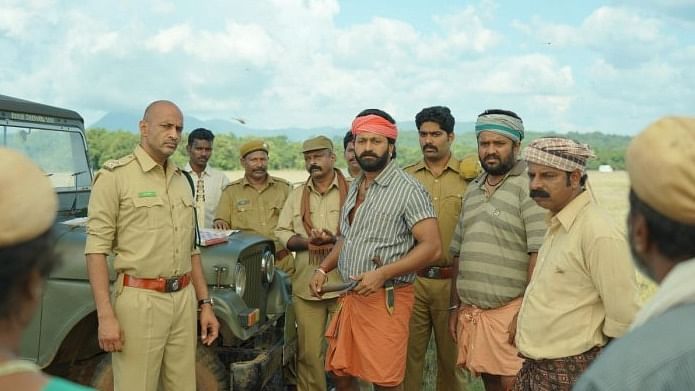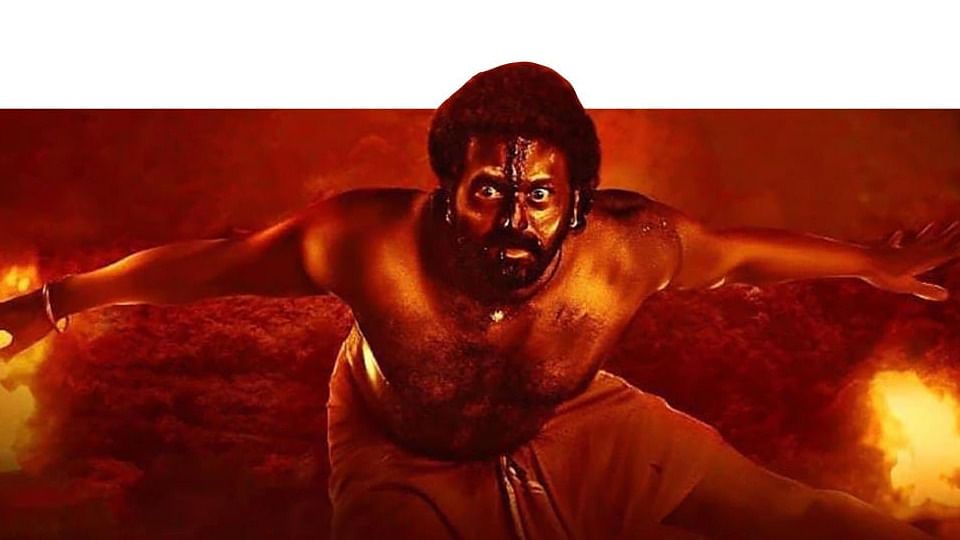

Politically speaking, India is a very complex milieu because of the numerous political and social forces and identities —religious, caste and language to name only three — struggling for ascendancy. But the efforts to capture it in cinema have been simplistic and too driven by ideological predispositions. Filmmakers themselves may not need to be aware of what they are doing — in political terms — but their representations need to at least acknowledge the forces working in the milieu.
Art and popular cinema both deal with the fortunes of one or two individuals pitted against ‘the system’ in which an egregious element like caste hierarchy (Sairat) or religious intolerance (Nasir) stands out. Rishab Shetty’s Kantara avoids this but deals with an entire community and with many issues. It invokes so many elements that it risks incoherence, but it is thematically also ambitious.
The primary achievement of Kantara is to avoid the dry rationalist approach of political cinema and embrace the irrational. The story begins in 1847, a King making a pact with a local deity Panjurli to give away a part of his land to the tribal people in exchange for peace and happiness. The deity customarily speaks through the oracle on the day of the festival. The pact is honoured until a descendant of the King (in 1970) demands the lands back during the annual festival; the threat of Panjurli’s rage at the flagrant dishonouring of the century-old pact with the deity does not deter him. He tries to take the issue to court but is found dead in mysterious circumstances on the court’s steps as predicted by the deity.
In the present day, Shiva (Rishab Shetty) is an unruly but heroic figure in the milieu where the most powerful person is the King’s descendant Devendra Suttooru. He has officials in his pocket until the courageous Muralidhara (Kishore) arrives there as the Deputy Range Forest Officer. There is an immediate confrontation between Shiva and the DRFO, who tries to prevent the locals from gathering wood and hunting boar.
The introduction of the state through DRFO complicates the story in political terms. Normally, mainstream films (Sherni) see the courageous official as being in the right and fighting the lawless and corrupt elements in the milieu. But here, there is a local community aligned against the state, the former made stronger through its backing by the deity. Since the state is against the community, a natural question is whether the film is not dealing with the nation-state’s inability to contain the legitimate aspirations of its marginalised constituents — made unimpeachable by the deity’s tacit support.
Since the Indian state today is sympathetic to Hindu causes what does its conflict with the local deity signify in the film? Panjurli is not from mainstream Hinduism and it could be a conflict between the cult’s desire for autonomy and the mainstream’s attempts at appropriation. One of Panjurli’s manifestations is in the shape of a boar which is interpreted as Varaha, an avatar of Vishnu. But there is the likelihood that the boar being deemed an ‘avatar’ was itself part of such Brahminical appropriation.
Whenever cinema shows conflict between the protagonists and state officials (Paan Singh Tomar) it is usually because the officials are corrupt and in the service of vested interests. The protagonists in such portrayals are still with the nation –though without mediation by the corrupt state; but in Kantara the DRFO is blameless. The interests of the state are hence inherently at odds with those of the community, i.e.: the community is not represented in the film as a constituent of the nation but with its own separate interests.
What has just been suggested has correspondence in actual tribals being displaced on the grounds of environmental protection - while the powerful encroach upon forest lands with impunity. But in Kantara, the deity is with the tribal people, which means that they are divinely guided and bound for victory. This implies that the film is pitting the community against the nation-state and - given the present political climate – asserting that local religious communities cannot be subsumed under an overarching ‘Hindu’ nationhood.
Stuck with such a riskily radical statement, Rishab Shetty takes a safer course through an action interlude where the DRFO is turned against the landlord. Action interludes are usually a way of resolving irresolvable socio-political conflicts in films through distractions. When a towering villain (like the landlord) is created, one forgets the issues that need addressing. The landlord’s henchmen against the combined forces of the tribal people and officialdom achieves just that and the film’s radicalism is diluted.
But the conclusion of the film is deeply moving; Shiva is possessed by the deity and everyone including the DRFO submits. This is the rational state not as the transcendental object of devotion but submitting to local beliefs – discourse rarely heard when ‘national interests’ trump everything else. The use of Carnatic music at the eventual climax is incongruous since it is Brahminical while we are dealing with tribal belief. Still, the film allows for ‘mainstream Hindu’ and Panjurli (as a local deity) not having identical constituencies. Kantara suggests that the interests of the nation’s constituents may not be in sync with the nation-state. This, especially given its religious angle, is a radical proposition.
(The writer is a well-known filmcritic and author)